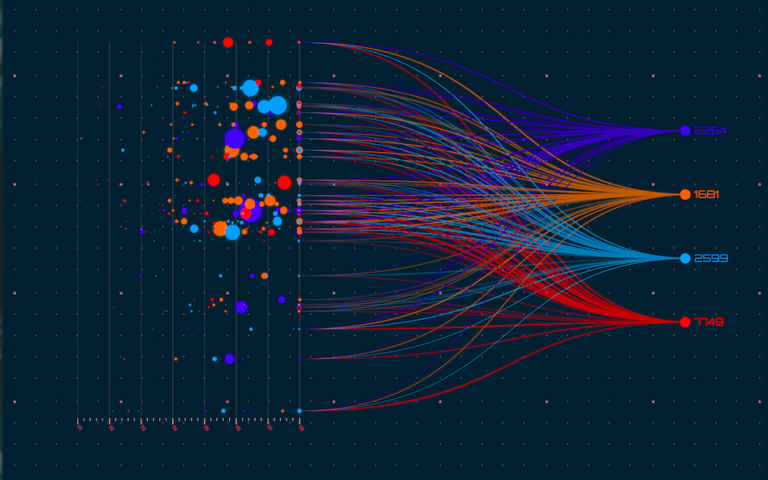Drilling Down on Airline Shopping Intelligence
Part 2 — To be successful in selling the right products at the right time to the right travellers, it’s increasingly critical for airlines to harness the power of modern merchandising and retailing, especially via the channels they are not able to control. Part one: “The expanding role of Search Data in Airline Merchandising” defines the overall data framework while this article drills down to specific shopping insights and how they can be used.
Customer Insights That Count
The Triometric analytics platform helps airlines to know their own customers better through insights into customer search behaviour in near-real-time and provides the analysis tools and reports to explore the airline shopping performance and observe recurring patterns. Every search and booking message can be captured and analysed. Millions of message streams can be recorded and analysed and actionable insights can be extrapolated.
With an overview of all searched and purchased sales offers, airlines can see their look to book ratio on a real-time basis and therefore know who well their offers are converting. Such intelligence gives airlines control over the common searched sales offers and enables them to make adjustments to increase conversion and passenger revenues.
Airline executives can make better commercial decisions when they understand customer groupings in terms of:
– What type of customers they are
– Their degree of engagement
– How they contribute to revenue
– Ancillary upselling-purchasing opportunities
Examples of some key questions that airlines are able to answer include:
– Who are best customers groups and what do they do/look like?
– Which customer groups and/or products are driving growth/or are in decline?
– Which customers/products are impacting my booking curve at this moment?
– What is the most appropriate ancillary cross-sell or up-sell by customer group/route?
– Which routes are best performing by ticket types
This is just a flavour of the kind of intelligence that Triometric can provide to airlines who are using either XML or JSON message streams in their merchandising environment.
While airlines have long been proponents of historical data to make predictive assumptions and conclusions on a carrier’s past performance with existing business, in existing markets, they can now apply the same data talents in assessing demand using real-time shopping data. When used by the various airline departments involved in servicing or reporting on the various customer touchpoints this can help the carrier to drive profitability by minimising revenue leakage and increasing efficiency in capturing and translating customer searches into converted bookings.
Transforming XML Data into Intelligence –How we do it
Of course getting right information out of a data stack and being able to use it to make timely decisions requires the right analysis and visualisation tools. Collecting, analysing and visualising XML search and booking data to help travel companies make better business decisions based on real-time insight is what we do best. Data analysis and what it means to a business can be brought alive with rich data visualisation techniques.
Our analytics platform churns through an immense amount of raw XML data and extracts meaningful information about the nature of the searches and bookings. The output is delivered in easy to read dashboards and reports which can then be available to diverse data consumers.
A word on the process itself. The data is capture and presented in cube-like forms that can then be diced, sliced and drilled to deliver real world scenarios. It means business analysts can look in isolation at the dataset that is relevant to them, and not have to bother with the rest. From a structural perspective, data cubes are an easy way of looking at complex data. They are made up of two elements: dimensions and measures. Dimensions represent the categories of data under scrutiny, while measures are simply the actual data values, such as quantity, time or location.
With a choice of dimensions and measurements, the platform is highly flexible and customisable to meet the needs of an airlines operational environment. With data summaries at unit, product, customer, destination or any other available data dimension, analysts can efficiently report actual performance.
The dynamic nature of this kind of report generation allows users to make real-time changes and to see data the way it benefits them most. They can also make modifications and save reports for reuse whenever needed. For many reports, data can be exported into other applications, such as spreadsheet tools or other aggregating stacks or for additional ad-hoc analysis. The data vision is immediate and not a rear mirror view – so taking action resulting from the data can have immediate impact too.
The NDC Vision — The Full Picture
Analysing XML data flow gives airlines vital intelligence to innovate and manage their offers. It also facilitates dynamic, limited-time campaigns for individual customer segments or events (e.g. summer/winter vacation periods, global sporting events, etc.). This type of interactive, individualised merchandising requires an airline to thoroughly understand what the data indicates about its product and service offerings, markets where it operates, competitive landscape, actual performance versus planned performance, as well as many other factors. XML intelligence is key in achieving this vision. No NDC Merchandising strategy should be without the fundamental analytics platform that delivers the customer insights that count







